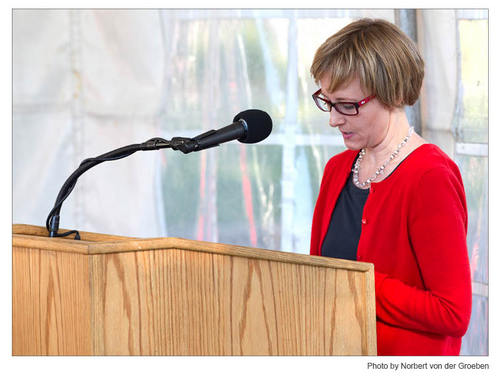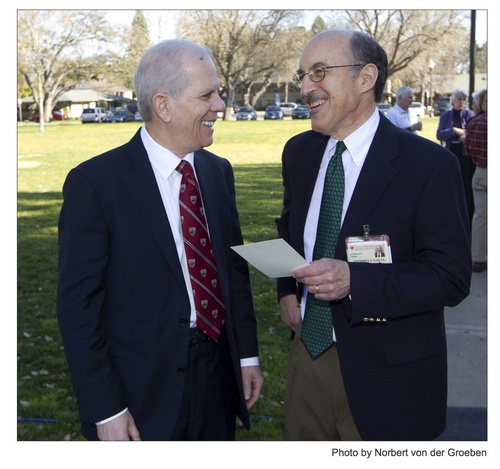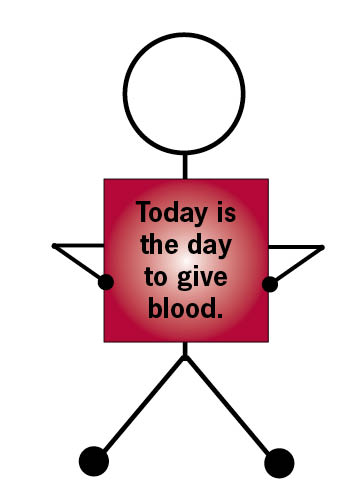February 2013
Sharks Foundation Blood Drive
TweetWe are teaming up with the Sharks Foundation again for our most well-attended blood drive of the year! Donate Life (organ donation) and the Be The Match program (marrow donation) will also be on hand to register interested donors.
Those donating will have the opportunity to watch the morning skates for both the San Jose Sharks and the Nashville Predators and be entered into a prize drawing for the chance to win merchandise and autographed memorabilia.
Grand Prize: San Jose Sharks Tickets and Pre-Game Behind-the-Scenes Tour
The winner and a guest will be treated to:
• a behind-the-scenes tour of HP Pavilion prior to the San Jose Sharks vs. Detroit Red Wings game on Thursday, March 28
• an escorted trip down to ice-level to watch the team exit the locker room and skate through the Shark Head before the start of the game
Blood Drive Details
Date: Saturday, March 2, 2013
Time: 7:30 a.m. to 2:00 p.m.
Location: Shark Tank/HP Pavilion - North Concourse Entrance
Make an appointment online or call 888-723-7831.
A Few Facts & Tidbits
• The Sharks drive holds the record at SBC for the highest number of units collected at a blood drive (338 in 2010 – up from 80 in its first year, 2007!)
• The Sharks had a winning streak four years in a row for the games played on the evening of the blood drives
• Team captain Joe Thornton is the same age as Stanford Blood Center
• A donor who signed up with Be The Match was found to indeed be a match for a patient needing a bone marrow transplant! (For those on the registry, there is about a 1 in 540 chance of being a match.)
Antigens on RBCs
TweetBy Billie Rubin, reporting from the labs of Stanford Blood Center
The antigens on the surface of red blood cells can be made out of proteins, carbohydrates, glycoproteins or glycolipids. The A and B antigens that we commonly hear about belong to the ABO system. You can think of the systems as family members determined by your genes.
In addition to the ABO system, there are another 28 systems of antigens that are currently recognized, like the Rh system, and the Duffy system. Altogether there are 29 blood group systems that contain about 600 antigens between them.
Some antibodies to those antigens (about 14 of them) are more common than others and are clinically significant. They can cause serious reactions if transfused to an incompatible patient and therefore need to be identified beforehand so the hospital can find compatible blood that lacks the corresponding antigens.
The RBC surface is a very busy world!
Powerful Panda Blood
TweetBy Billie Rubin, reporting from the labs of Stanford Blood Center
According to an article from the Telegraph, these gentle guys' blood may be the next big thing in antibiotics, especially for bugs that have become resistant to our usual kind.
Researchers at the Life Sciences College of Nanjing Agricultural University in China isolated the magic cathelicidin-AM, a key player in immune defense, in the panda blood and have been able to synthesize it artificially by decoding the genes that produce the compound.
It seems some animals have an edge on people: shark blood has cancer-fighting properties; dogs have some of the cathelicidin antibiotic in their saliva; and now we’ve learned that pandas produce killer antibodies. In addition to animals, we’ve got molds that can produce penicillin. In some ways, we are certainly weak in comparison!
Volunteer Program
TweetBy Julie Peachey, Social Media Manager, Stanford Blood Center
Our staff members are occasionally asked if their positions at Stanford Blood Center are volunteer roles. This question often engenders a chuckle from those imagining their full time jobs being full time volunteer work. But although our nursing, administrative, and other operational staff are paid employees, we do have a variety of volunteer roles to help us achieve our goal of providing blood products to patients in need. In fact, there are over 100 active volunteers who together donate 300-400 hours per week to SBC to help our operation run smoothly.
Our volunteers include a variety of people including students, retirees, and those exploring career changes. Neal Biswas, pictured above, started volunteering in our canteen a year and a half ago to earn community service hours for a school requirement. Though he’s met the requirement, he’s been motivated to continue volunteering. “My favorite part of volunteering with SBC is interacting with the donors after they have donated. Its always fun to talk to them, whether they are telling me about their reasons for donating blood, giving me college advice, or even just talking about sports.”
Volunteer shifts are available during the day, evening, and weekend at our center locations and mobile blood drives. Shifts at our centers are about 2 ½ hours and can be on a consistent schedule or an occasional basis. Mobile drives take place in a variety of settings and locations, allowing the volunteer to choose something that fits their schedule.
Volunteer Positions
Canteen»
Interact with donors after they’ve donated and monitor their recovery. Serve refreshments.
Label Table»
Work with the nursing team by labeling medical history forms, blood bags, and test tubes, and then matching them all to donors. Label table volunteers help at blood drives only.
Shuttle Drivers»
Transport coolers of blood products from the blood drives to the labs at the Palo Alto Center. Shuttle volunteers use their own cars and SBC reimburses for mileage.
Administrative Positions»
Help with making phone calls, putting together information packets, filing and clerical work, and the occasional special event. This work is needed in various departments.
Laboratories»
Support the Components and Histocompatibility Labs by filing, labeling, and making tags. These labs are located at the Palo Alto Center.
Our volunteer program is an integral part of SBC. To participate, please contact Tessa Moore: tessamoore@stanford.edu.
National Blood Donor Month Shouldn’t End There
Tweet
By Richard P. Console, Jr., an advocate for blood donation whose life has personally been touched by the generosity of blood donors. To read the unabridged article, please click here.
If you could save a life, would you? For ninety-five percent of eligible Americans, the answer apparently is, no.
We as a society talk a lot about saving lives. We talk about gun control, substance control, speeding control, defective products, fire hazards, and infectious diseases. Too often, maybe, we talk about only big-picture changes. We ask what kind of federal or state regulations should be passed to save lives, knowing that, in the tangle of red tape that accompanies any such process, more lives will be lost, often for no reason at all.
Maybe we don’t talk enough about what we, as individuals, can do.
I’m not recommending that you run into a burning building to save a baby, or anything like that. Though they are noble professions, I’m not asking you to quit your day job and instead volunteer as an EMT or firefighter, either. What I’m proposing, and what the families of 5,000,000 critically injured or ill patients pray for each year, is that you consider taking just one single hour out of your life to give something priceless: blood.
January was National Blood Donor Month, and though local and national news agencies promote the event every year, blood supply levels remain low. Only five percent of those eligible to donate actually do, according to the Mayo Clinic. The truth is, though we know such a thing as blood donation exists, though we hear about the Red Cross on the news, one of the most common reasons people give for not donating blood is that they simply don’t think about it.
No one wants to think about giving blood, but not because no one cares. In reality, no one wants to believe that a blood supply shortage could ever affect their lives personally. You don’t want to imagine what it would be like if you — or your spouse, your children, your siblings, or your best friend — were the one who needed blood.
I hope you never need a blood transfusion. I hope that no one you love ever has to rely on the selflessness of blood donors just to make it through the night. When someone in the United States needs a transfusion every two seconds, as the American Red Cross reports, those odds aren’t in anyone’s favor. The Mayo Clinic reports that 25 percent of Americans will need a blood transfusion at some point during their lives.
Let me tell you with absolute sincerity that having been on the other side of the situation as the loved one of a critically injured accident victim, the people who take that hour to donate are heroes.
The Gift of Blood Donation
When you donate a single unit of blood, you can save as many as three lives. That means three people who are suffering from cancer, or who have been mangled in terrible car crashes, or who have been hurt in other unimaginably horrible accidents, don’t have to die. Three families don’t have to bury a loved one who should have had a full life left ahead of them.
The impact goes beyond numbers. There is no statistic to measure the influence of the lives saved each time a blood donor gives an hour of time and a pint of blood.
* * * * * * * * * * * * * * * * * * * *
For an appointment to give blood with Stanford Blood Center, please call 888-723-7831 or click here.
Menlo Park Center Grand Opening Celebration
TweetBy Julie Peachey, Social Media Manager, Stanford Blood Center
On Thursday, January 31, Stanford Blood Center staff celebrated the grand opening of their new Menlo Park donor center, along with a few special guests. Below are some pictures capturing the momentous occasion.

Harpreet Sandhu, SBC Administrator, Ed Engleman, MD, SBC Founder and Medical Director, Stephen Galli, MD, Stanford University School of Medicine Pathology Department Chair, and Peter Ohtaki, Menlo Park Mayor cut the ribbon outside the entrance of the new center.

Dr. Ed Engleman tells stories about the early days of SBC back in 1978.

Linda Ann Johnson and Stan Jensen, routine blood donation buddies, have together given blood 965 times.

Melissa Price almost died from a postpartum hemorrhage after her twin boys were born but was saved by multiple units of blood donated by SBC blood donors. Guests fought back tears listening to her express sincere gratitude for the anonymous donors that saved her life, allowing her boys to know their mother.

Ed Engleman and Stephen Galli have been good friends and colleagues for over 30 years.

Mayor Peter Ohtaki stuck around after the celebration to do a good deed.






